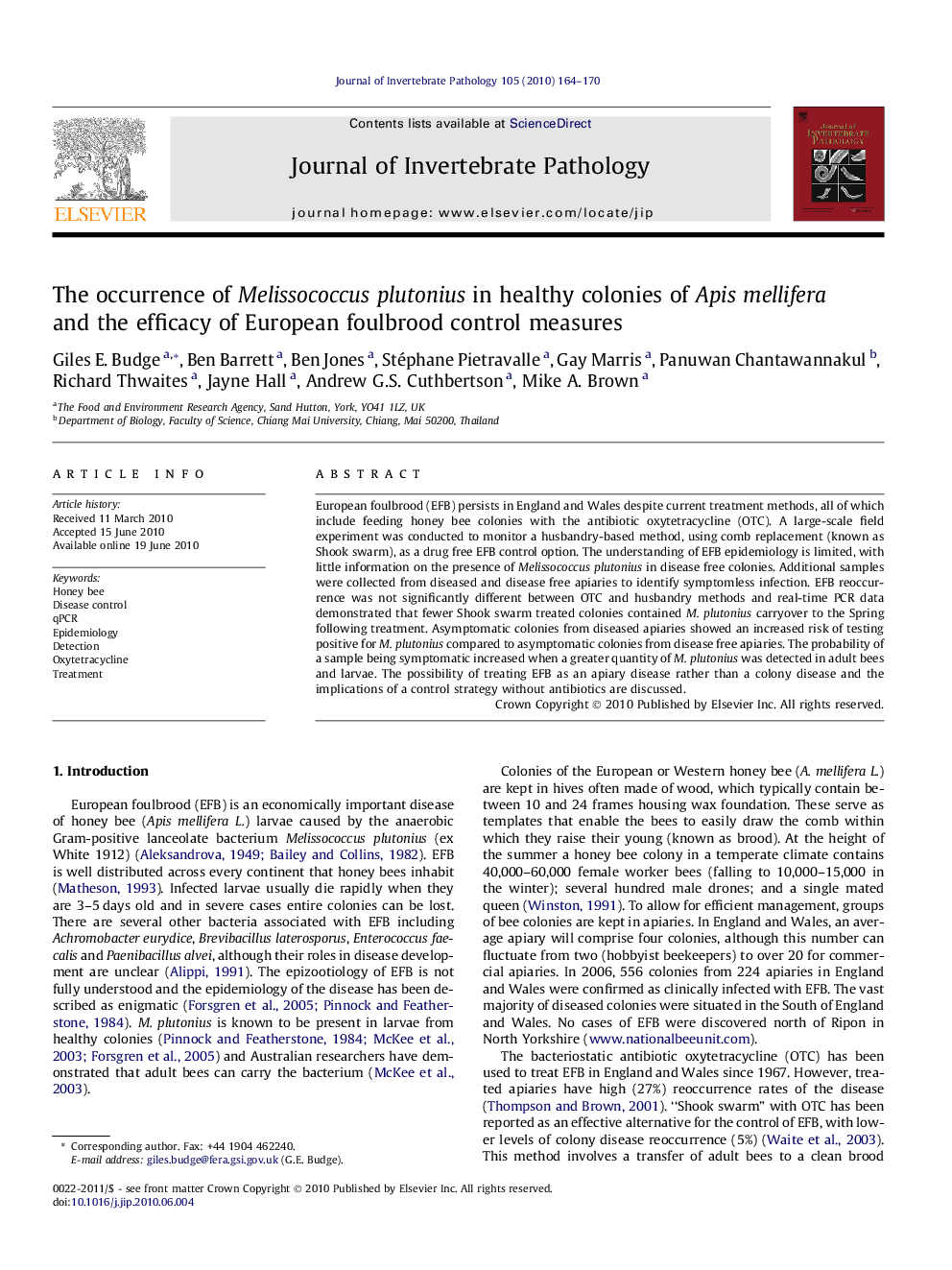| Article ID | Journal | Published Year | Pages | File Type |
|---|---|---|---|---|
| 4558133 | Journal of Invertebrate Pathology | 2010 | 7 Pages |
European foulbrood (EFB) persists in England and Wales despite current treatment methods, all of which include feeding honey bee colonies with the antibiotic oxytetracycline (OTC). A large-scale field experiment was conducted to monitor a husbandry-based method, using comb replacement (known as Shook swarm), as a drug free EFB control option. The understanding of EFB epidemiology is limited, with little information on the presence of Melissococcus plutonius in disease free colonies. Additional samples were collected from diseased and disease free apiaries to identify symptomless infection. EFB reoccurrence was not significantly different between OTC and husbandry methods and real-time PCR data demonstrated that fewer Shook swarm treated colonies contained M. plutonius carryover to the Spring following treatment. Asymptomatic colonies from diseased apiaries showed an increased risk of testing positive for M. plutonius compared to asymptomatic colonies from disease free apiaries. The probability of a sample being symptomatic increased when a greater quantity of M. plutonius was detected in adult bees and larvae. The possibility of treating EFB as an apiary disease rather than a colony disease and the implications of a control strategy without antibiotics are discussed.
